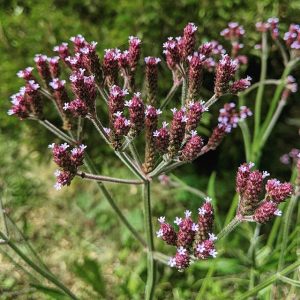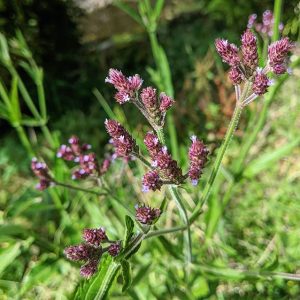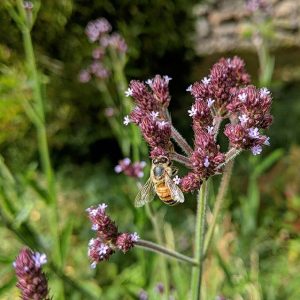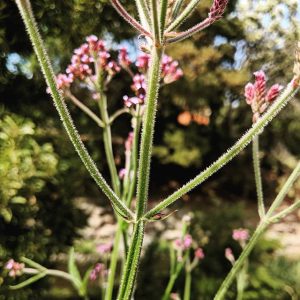Purple-top (Verbena bonariensis), specifically the variety V. bonariensis var. bonariesis. The other is var. conglomerata, which this channel covered earlier in the season.
As noted in that earlier post, this species was so quickly and extensively distributed in lowland NSW and Queensland that von Mueller apparently described those parts of the country as the ‘Verbena Plains’. As one botanical accounting published in Sydney observed, ‘the Buenos Ayres verbena (V. bonariensis, Linn.) is a far more troublesome weed in cultivation, and has spread to a greater extent along creeks, &c., in fact everywhere where the land is moist and rich. It grows to a height of 8 and 10 feet, and as it is not eaten by stock has a fair chance of covering the country’ (Sydney Mail 08/03/1879).
Another 1879 description cast the plant as ‘the bane of good land in Queensland and New South Wales, born in America, and evidently badly brought up, and not kept within bounds in its young days’ (The Australasian, 12/04/1879). Its presence in Victoria, which appears to have lagged the NSW introduction, has always been somewhat more limited (or owing to different patterns of pastoral land use, less noteworthy), and it was never the recipient in this state of such moral concern.
var. bonariensis differs most prominently from var. conglomerata in the presence of prominent and well-defined flower spikes in its terminal inflorescences (in conglomerata they are reduced to the flat clusters seen in the earlier post).
View Original Post on Instagram
Search for information about Verbena bonariensis in the Flora of Victoria
View information and occurrences of Verbena bonariensis on the Atlas of Living Australia










